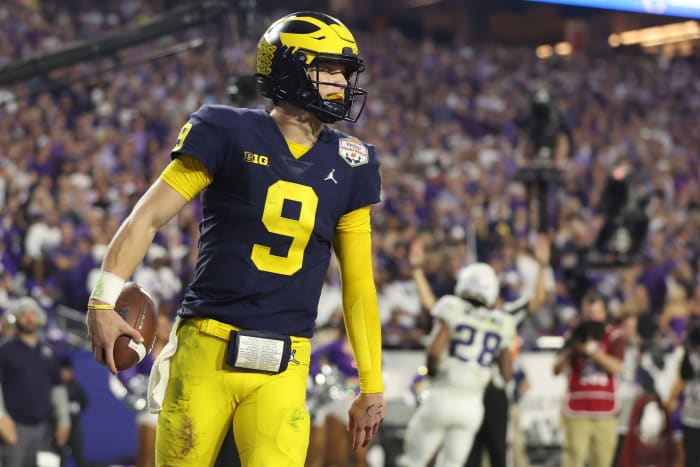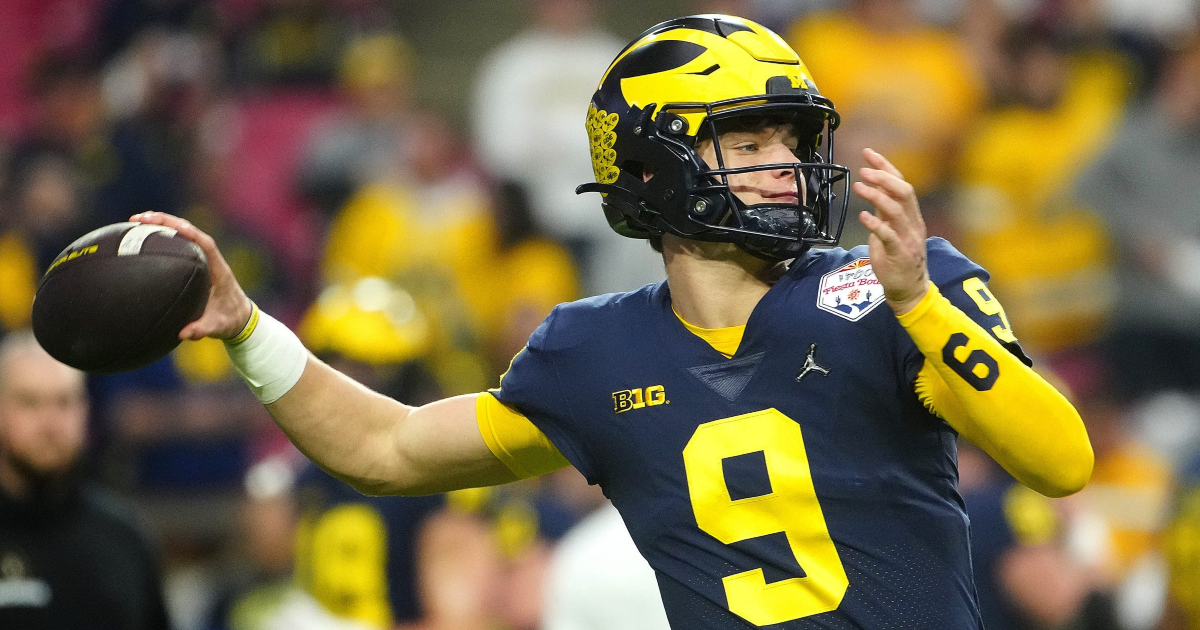JJ McCarthy’s Injury History: Jj Mccarthy Knee Injury

JJ McCarthy, the talented quarterback for the University of Michigan Wolverines, has faced a series of knee injuries throughout his career. These setbacks have significantly impacted his performance and career trajectory, raising concerns about his long-term health and potential. Understanding the nature and severity of these injuries is crucial to assess his future prospects.
Timeline of JJ McCarthy’s Knee Injuries
The timeline of McCarthy’s knee injuries reveals a pattern of recurring setbacks that have hampered his progress.
- 2021: McCarthy sustained a minor knee injury during his freshman season at Michigan, forcing him to miss a few games. While the injury wasn’t severe, it provided an early glimpse into the potential vulnerability of his knee.
- 2022: McCarthy suffered a more serious knee injury during the 2022 season, requiring surgery and significant rehabilitation. The nature of the injury, a torn ACL, was a major blow to his development and raised concerns about his ability to return to full strength.
- 2023: While McCarthy has recovered from the ACL tear, he has continued to experience discomfort and stiffness in his knee, prompting concerns about the long-term impact of the injury. These lingering issues have affected his mobility and explosiveness, potentially hindering his ability to perform at his peak.
Impact of the Current Knee Injury

JJ McCarthy’s recent knee injury has cast a shadow over the upcoming season, raising concerns about his availability and potential impact on his performance. The severity of the injury and the timeline for recovery remain uncertain, leaving both fans and the coaching staff anxiously awaiting updates.
Potential Impact on the Upcoming Season
The impact of McCarthy’s knee injury on his upcoming season hinges on the severity of the injury and the duration of his recovery. The potential range of outcomes includes missing games, requiring surgery, or a full recovery.
- Missing Games: The most immediate concern is the potential for McCarthy to miss games. The severity of the injury and the required rehabilitation period will determine the number of games he might miss. A minor injury could result in a few weeks of absence, while a more serious injury could sideline him for a significant portion of the season.
- Requiring Surgery: If the injury is severe enough, surgery may be necessary. This would likely result in a longer recovery period, potentially impacting his availability for the entire season.
- Full Recovery: In the best-case scenario, McCarthy could make a full recovery and return to the field without any lasting effects. However, even with a full recovery, it may take time for him to regain his full strength and agility, potentially impacting his performance early in the season.
Comparison to Previous Injuries
It’s important to compare McCarthy’s current injury to his previous injuries to assess any potential similarities or differences. While his injury history is already addressed, analyzing the nature of the injuries and the recovery timelines can provide insights into the potential impact of the current injury. For instance, if his previous injuries were similar in nature, it may indicate a pattern of susceptibility to knee injuries. Conversely, if the current injury is significantly different, it may suggest a unique challenge requiring a different approach to rehabilitation.
Rehabilitation and Recovery

The severity of JJ McCarthy’s knee injury will dictate the specifics of his rehabilitation process. However, a typical recovery path for a knee injury of this nature involves a combination of rest, physical therapy, and gradual return to activity.
Expected Rehabilitation Process
Rehabilitation for a knee injury like McCarthy’s is a structured and progressive process. It aims to restore the injured knee’s full functionality, strength, stability, and range of motion. The process typically includes:
- Rest and Immobilization: The initial phase focuses on reducing inflammation and pain. This may involve immobilization using a brace or crutches to prevent further damage and allow the injured tissues to heal. The duration of this phase depends on the severity of the injury.
- Physical Therapy: Once the initial inflammation subsides, physical therapy begins. This phase involves a series of exercises designed to improve range of motion, strength, flexibility, and coordination. Exercises might include:
- Range of motion exercises: These exercises help restore the full movement of the knee joint. They may involve gentle bending and straightening of the knee, as well as controlled rotations.
- Strengthening exercises: These exercises focus on building strength in the muscles surrounding the knee, including the quadriceps, hamstrings, and calf muscles. Examples include leg presses, squats, and hamstring curls.
- Balance and coordination exercises: These exercises help improve stability and coordination around the knee joint. They may involve standing on one leg, walking on uneven surfaces, and performing agility drills.
- Gradual Return to Activity: As the knee heals and strength improves, athletes gradually return to activity. This involves a gradual increase in the intensity and duration of exercise, starting with light activities and progressing to more demanding exercises. The return to play process is carefully monitored to ensure the knee is ready to withstand the stresses of athletic competition.
Timeline for Recovery, Jj mccarthy knee injury
The recovery timeline for a knee injury varies depending on the severity and type of injury. For a mild injury, the recovery period might be a few weeks. However, for more severe injuries, the recovery process can take several months.
- Rest and Immobilization: This phase typically lasts for a few weeks, depending on the severity of the injury.
- Physical Therapy: Physical therapy can last for several weeks or months, depending on the individual’s progress and the severity of the injury.
- Return to Play: The return to play process is gradual and can take several weeks or months. It is important to follow the guidance of medical professionals and physical therapists to ensure a safe and successful return to competition.
Potential Risks and Challenges
Rehabilitation for a knee injury can be challenging, and there are potential risks associated with the process.
- Re-injury: One of the main risks is re-injury. If the athlete returns to activity too soon or does not follow the rehabilitation program properly, they may re-injure the knee. This can delay the recovery process and potentially lead to further complications.
- Pain and Stiffness: During the rehabilitation process, athletes may experience pain and stiffness in the knee. This is normal, but it is important to communicate any pain concerns with the medical team to adjust the rehabilitation program accordingly.
- Psychological Impact: A knee injury can have a significant psychological impact on athletes. They may experience frustration, anxiety, and fear about their ability to return to their sport. It is important to address these psychological factors to support the athlete’s overall recovery.
Jj mccarthy knee injury – JJ McCarthy’s recent knee injury has been a cause for concern among fans. While the specifics of the injury haven’t been fully disclosed, it’s possible he may have sustained a torn meniscus , a common injury among athletes. This type of injury can affect mobility and stability, so hopefully, McCarthy will receive proper treatment and make a swift recovery.
